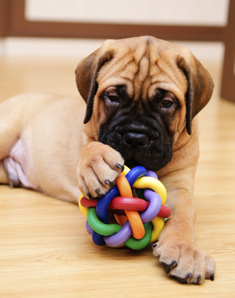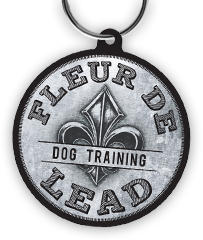Checklist for Your New Dog

When you bring a new dog into your home, you might be a little overwhelmed. Thus, here is a checklist of things to consider for the new addition to your home.
What You Need:
- Crate: Buy a size-appropriate crate for use in potty training and providing down time for your dog. Dogs are den animals, so having a safe place to rest will be very comforting. Put a blanket or bed inside to increase comfort.
- D Tag: One of the most important things you can get for your dog is an ID tag with your number on it.
- Martingale or Flat Collar: Your dog will need to go on walks so buy a collar he can’t slip out of. If you are getting an adolescent dog that may be more difficult to walk, speak with us about using a training collar.
- 6-foot leash
- Water and Food Dishes
- Dog beds: Especially if you are not allowing your dogs on the furniture, provide a couple of comfortable beds in the main rooms of the house so they can relax with the family.
- High-Quality Food: Look for a high quality food with healthy ingredients. Discuss any special nutritional needs for your breed or breed mix with your veterinarian. The folks at Neighborhood Pet Market are an AWESOME resource.
- Treats: When you start training, you’ll need treats. Again, the higher quality the better.
- Poop bags: You’ll need them for walks.
What to Expect:
- Adjustment Period: When you first get your dog, she will spend the first few days just trying to get adjusted. This is the “honeymoon phase.” If your dog has any bad habits from her previous home, these may not appear in the first few weeks.
- Potty training: Young puppies are not potty-trained, and an adult dog might not be either. You don’t want her having accidents in the house, so keep an eye on your new dog constantly so she can’t make a mistake.
- Chewing: Your dog doesn’t know which things are her chew toys and which aren’t. Limiting house freedom will help you keep an eye on her so you can redirect to something on which she is allowed to chew.
- Teenager Phase: This lasts from about 6-18 months depending on the dog, and you will wonder why your previously wonderfully behaved dog has suddenly started to test her limits. This is normal. Just be consistent!
What to Do:
- Set Consistent Rules: Decide as a family what the rules are and enforce them from the beginning. If it’s not going to be cute when your dog is 10 years, don’t let him do it when he’s 10 weeks. Sending a consistent message to your dog is an important part of training.
- Establish a Routine: Dogs respond well to routines, so while they are adjusting to their new home, try to keep meal, walk and bed times as consistent as possible.
- Be Positive: Positive-reinforcement training is a great way to teach your dog the rules while establishing a solid relationship. Be patient. It’s hard to adjust to a new home.
- Socialize: If you have a puppy, make sure to socialize him to other dogs, people, children, skateboards and everything else you don’t want him to fear.
- Post Emergency Numbers: Post the numbers for your veterinarian and nearest emergency practice on your refrigerator with directions, if necessary.
